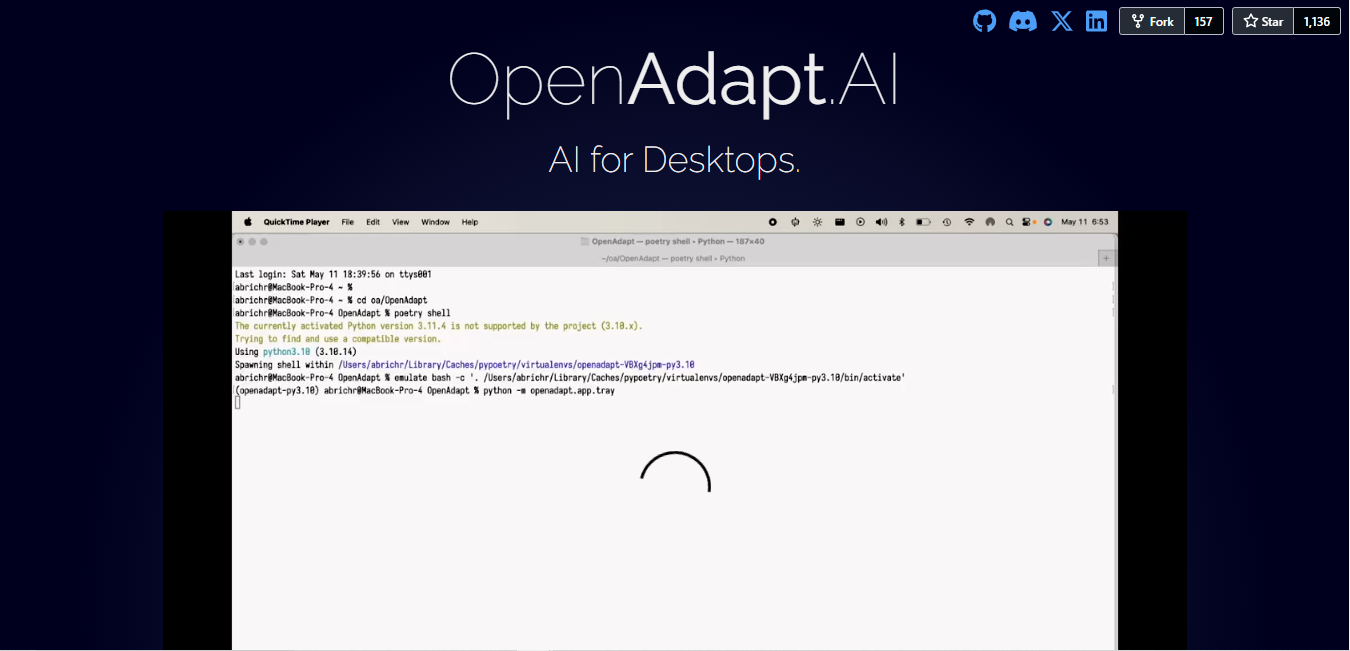
FlowKit
What is FlowKit?
FlowKit is a Python toolkit designed for flow cytometry analysis and visualization. It stands out with its comprehensive support for GatingML 2.0 standard and compatibility with FlowJo 10 workspace files, making it a valuable tool for scientific research and data analysis.
Top Features:
- Data Handling: reads and writes multiple FCS file versions with export options to various formats.
- Advanced Transformation: implements multiple transformation methods including Logicle, ArcSinh, and Bi-exponential.
- Interactive Visualization: creates dynamic scatter plots and histograms for detailed data analysis.
Pros and Cons
Pros:
- Versatility: supports multiple file formats and transformation methods for comprehensive analysis.
- Integration: works smoothly with popular data science tools like NumPy and Pandas.
- Documentation: provides detailed tutorials and examples for quick learning and implementation.
Cons:
- Technical Requirements: needs specific Python version compatibility and multiple dependencies.
- Learning Curve: requires programming knowledge and understanding of flow cytometry concepts.
- Platform Limitations: may require additional setup for certain operating systems.
Use Cases:
- Research Analysis: analyzing complex flow cytometry data in immunology and cell biology studies.
- Data Visualization: creating interactive plots for scientific presentations and publications.
- Automated Processing: handling large-scale cytometry data analysis with programmatic control.
Who Can Use FlowKit?
- Research Scientists: professionals working with flow cytometry data in laboratories.
- Data Analysts: specialists focusing on biological data processing and visualization.
- Bioinformaticians: experts developing automated analysis pipelines for cytometry data.
Pricing:
- Free: open-source software available at no cost.
- Installation: available through PyPI or source code on GitHub.
Our Review Rating Score:
- Functionality and Features: 4.5/5
- User Experience (UX): 4.0/5
- Performance and Reliability: 4.5/5
- Scalability and Integration: 4.5/5
- Security and Privacy: 4.0/5
- Cost-Effectiveness and Pricing Structure: 5.0/5
- Customer Support and Community: 4.0/5
- Innovation and Future Proofing: 4.5/5
- Data Management and Portability: 4.5/5
- Customization and Flexibility: 4.5/5
- Overall Rating: 4.4/5
Final Verdict:
FlowKit excels as a specialized Python toolkit for flow cytometry analysis. Its comprehensive features, open-source nature, and scientific community support make it an essential tool for researchers and data analysts in biological sciences.
FAQs:
1) What programming knowledge is needed to use FlowKit?
Basic Python programming skills and understanding of flow cytometry concepts are necessary to effectively use FlowKit.
2) Can FlowKit handle large datasets?
Yes, FlowKit is optimized with C extensions for performance and can efficiently process large flow cytometry datasets.
3) Is FlowKit compatible with other analysis tools?
FlowKit integrates well with NumPy, Pandas, and other Python data analysis libraries, plus supports FlowJo workspace files.
4) How often is FlowKit updated?
FlowKit receives regular updates through its GitHub repository, with an active development community contributing improvements.
5) What operating systems support FlowKit?
FlowKit runs on major operating systems including Windows, macOS, and Linux, with specific setup requirements for each platform.
Stay Ahead of the AI Curve
Join 76,000 subscribers mastering AI tools. Don’t miss out!
- Bookmark your favorite AI tools and keep track of top AI tools.
- Unblock premium AI tips and get AI Mastery's secrects for free.
- Receive a weekly AI newsletter with news, trending tools, and tutorials.







